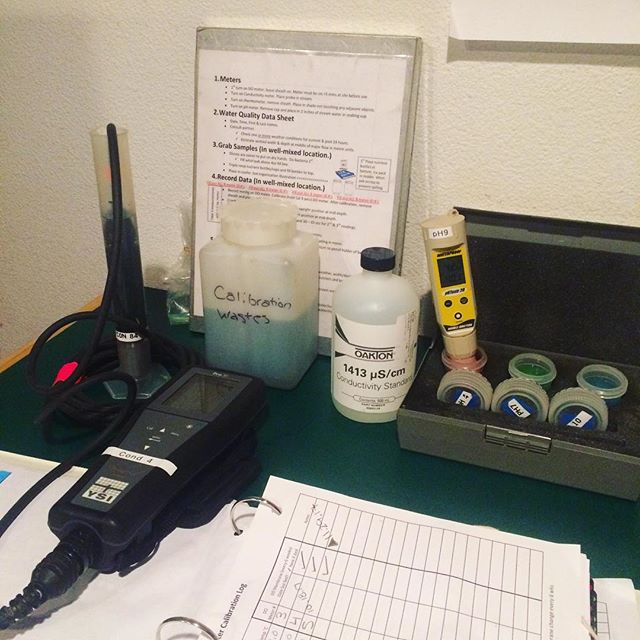Chemical Characteristics

Evaluation of the chemical characteristics of a river system is a fundamental objective when assessing the ecological condition of a watershed. The chemical attributes of a river will not only affect designated uses established for the water resource (e.g. domestic, recreational, agricultural), but they will also influence what biotic assemblages inhabit stream reaches. Additionally, monitoring chemical characteristics along a stream can help identify impaired reaches and possible stressors, as well as monitor the effectiveness of restoration efforts.
The majority of the chemical data is collected in association with our citizen-based monthly water quality monitoring programs.
We are monitoring the following water-quality parameters:
- Turbidity. Turbidity is a measure of the amount of suspended particles in water. High turbidity is deleterious to many aquatic organisms and indicates excessive erosion in the watershed.
- Conductivity. Conductivity provides an estimate of the amount of salts dissolved in a water body. While some salt content is beneficial, high levels are harmful. An increase in conductivity beyond normal levels may indicate pollution from agricultural runoff or other sources.
- pH. pH is a measure of hydrogen ion concentration and indicates the relative acidity or alkalinity of water. pH significantly higher or lower than the neutral value of 7 is deleterious to most aquatic life. pH measurements outside of a certain range may indicate problems such as excessive decay of organic matter (eutrophication) or acid mine drainage.
- Nitrate-Nitrogen (NO3). High nitrate content, typically from wastewater plant discharge and agricultural runoff, is problematic because it stimulates planktonic and algal growth, which can lead to eutrophication.
- Orthophosphate (PO4). Phosphate is similar to nitrate in terms of sources and effects.
- Dissolved oxygen. Oxygen is necessary for all forms of life. As dissolved oxygen levels in water drop below 5.0 mg/l, aquatic life is put under stress. Dissolved oxygen is reduced when excessive bacterial growth uses up the available oxygen.
- Total Coliform and E. coli bacteria. The concentrations of these indicator organisms can be used to assess the level of bacteria contamination in local waterways and the potential risk to humans recreating in these waterways.
- Water temperature. This is one of the most important parameters because of its influence on other water chemistry parameters such as dissolved oxygen levels, pH, rates of nutrient cycling, and contaminant transformation rates. Water temperature also regulates many aquatic organism functions including growth, reproduction, development, habitat preference, and competition.
Data for all these parameters are available on the Deer Creek and Bear River Watershed pages.
Benthic Macroinvertebrate Populations

Benthic macroinvertebrates (BMI) are excellent biological indicators of ecological condition and function. They are widespread in river systems, long-lived, relatively sedentary, low on the food chain, and in some cases highly sensitive to pollution. These characteristics make BMI ideal “bio-sentinels” for assessing stream health as they can reflect long- and short-term effects of activities within the watershed and specific reaches. Besides being useful biological indicators of water quality conditions, BMI are an integral part of the food web for fish, amphibians, reptiles, and birds.
Ideally, a watershed will have a rich and diverse BMI framework that reflects natural physical and chemical conditions and maintains ecological stability. We calculate the California Stream Condition Index (CSCI) to measure stream health based on BMI data.
Because of flow conditions, we only collect BMI data in the Deer Creek Watershed. Samples are collected at 16 monitoring locations each year in June and October. These samples are then identified to family level by citizen scientists in our “macro lab”. CSCI scores for each monitoring location are available on the Deer Creek Watershed page.

